GL 1 Introduction to Aviation
Rev 10/2024

Disclaimer

Students should use their textbooks, syllabus, and Airman Certification Standards (ACS) as their primary sources of information. EcFlight is an online training tool designed to simplify and enhance your ground school learning experience. However, it is not a substitute for FAA- or school-approved study materials. Before using these slides for study, always refer to your officially approved resources, such as the Jeppesen physical or electronic book and other FAA-approved materials.
Reference Books
- Aircraft Weight and Balance Handbook 2016 Faa-h-8083-1b. Aviation Supplies & Academics, 2016.
- Pilots Handbook of Aeronautical Knowledge: FAA-H-8083-25B. Aviation Supplies & Academics, 2016.
- Gleim, Irvin N., and Garrett W. Gleim. Pilot Handbook: a Comprehensive Text and Reference for All Pilots. Gleim Publications, Inc., 2016.
- (PrivatePilotSyllabus_eBook_10464404-003, n.d.)
Reference Images
- https://mapio.net/pic/p-6407214/
- https://www.faa.gov/licenses_certificates/airmen_certification/basic_med/
- https://www.gahawaii.com/wp-content/uploads/2018/05/EAAHawaii.jpg
- https://cdn.ssmedia.com/ninety-nines/webart/theme2/logo.png
- https://pixabay.com/photos/plane-hangar-aircraft-airport-601589/
- https://www.aopa.org/news-and-media/all-news/2018/september/flight-training-magazine/technique-weight-and-balance
- https://www.wikiwand.com/en/Center_of_gravity_of_an_aircraft
- Aviation Supplies & Academics, Inc. (ASA). (2024). 2025 FAR/AIM. Retrieved from https://asa2fly.com/2025-far-aim/
- https://vfraviation.wordpress.com/safety/
- https://pilotswhoaskwhy.com/2023/12/04/keeping-it-simple-threat-and-error-management-as-a-pilot/
- https://www.flickr.com/photos/freedomwing/48628312181
Reference Blogs
- https://www.ninety-nines.org/
- https://download.aopa.org/advocacy/2020/Visio_SFAR_Flowchart_5_FAR%2061_57_Recent%20_Instrument_Flight_Experience_V5.pdf
Index of Contents
Section C - Introduction to Human Factors
Section D - Developing Pilot Resilience
Pilot Training
Safety Standards
- FAA
- FAR
- ACS
- ICAO
- The FAA (Federal Aviation Administration) is a United States government agency responsible for regulating and overseeing all aspects of civil aviation within the country. Its primary roles include:
What is the FAA?
- The FAA is a crucial entity in maintaining the safety, security, and efficiency of aviation in the U.S. and around the world, especially in relation to US airlines and airspace.
- Air Traffic Control (ATC): Ensures safe and efficient aircraft movement in U.S. airspace.
- Safety Standards: Regulates aircraft certification, pilot licensing, and operational safety.
- Airport Development: Oversees public airport construction and maintenance.
- Commercial Space Regulation: Licenses and regulates space launches alongside aviation.
- Environmental Protection: Aims to reduce aviation noise and emissions.
- The FARs (Federal Aviation Regulations) are a set of rules established by the FAA (Federal Aviation Administration) to govern all aspects of civil aviation in the United States. The FARs cover various areas such as:
What are FARs?
-
The FAA enforces the FAR to ensure aviation safety and compliance with national and international standards. Essentially, the FARs are the legal framework the FAA uses to regulate aviation activities.
- Pilot certification
- Aircraft maintenance and operation
- Air traffic control procedures
- Safety standards for flights, airports, and more
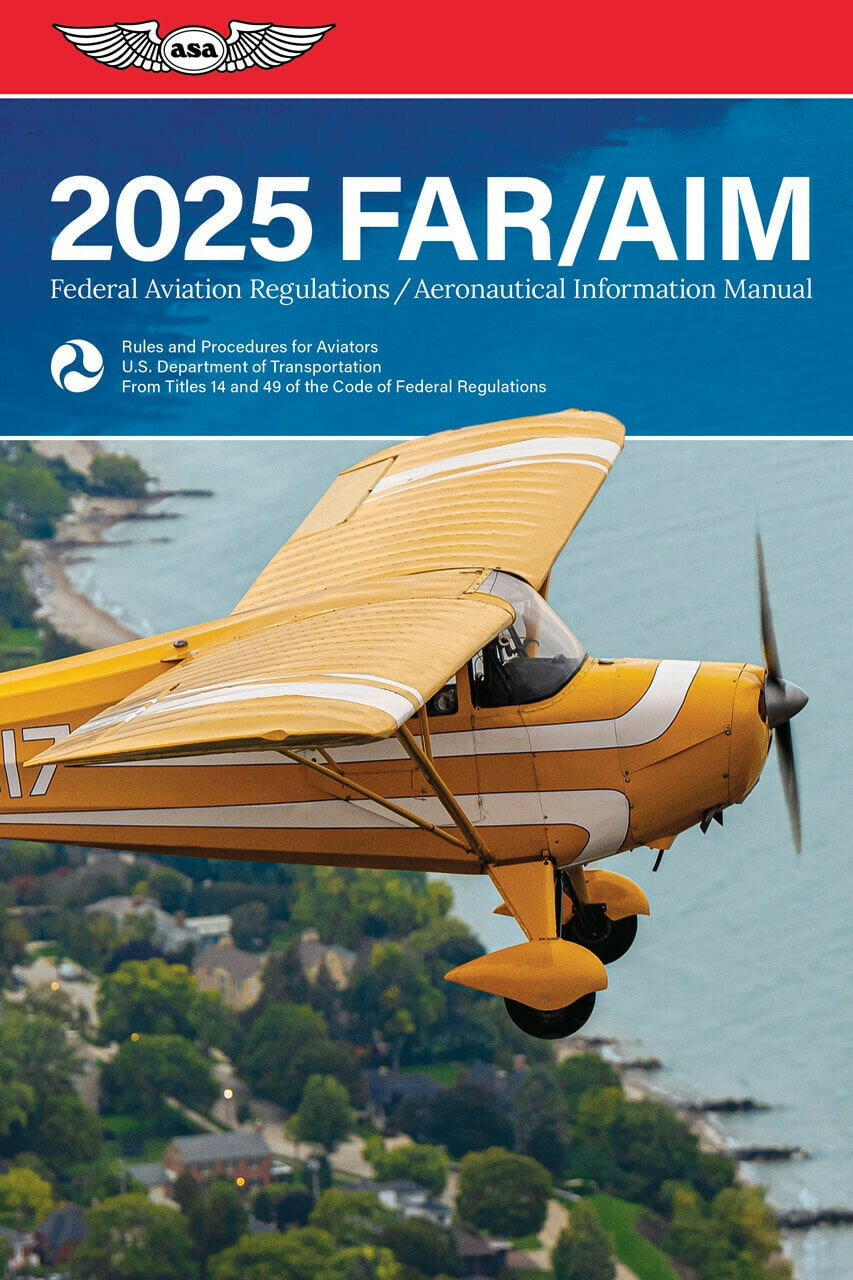
Aviation Supplies & Academics, Inc. (ASA). (2024). 2025 FAR/AIM. Retrieved from https://asa2fly.com/2025-far-aim/
- The Airman Certification Standards (ACS) are FAA guidelines that outline the knowledge and skills required for pilots to earn certifications. They set performance benchmarks for safe flying during exams and practical tests.
What is ACS?
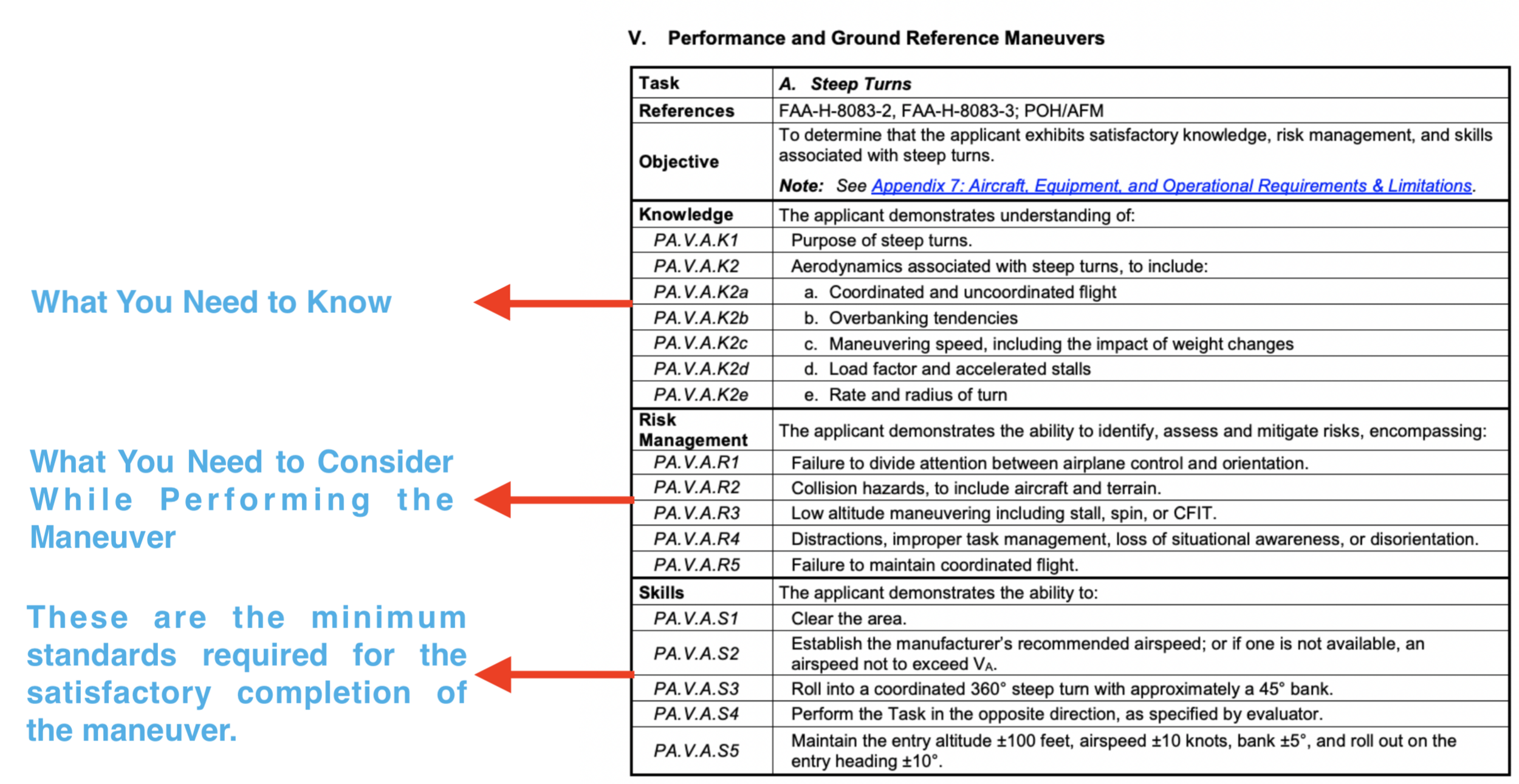
Here is the link to download the complete ACS from the FAA website:
- The International Civil Aviation Organization (ICAO) is a United Nations agency that sets global standards for aviation safety, security, efficiency, and environmental protection, working with member states and industry stakeholders to enhance international air transport. The FAA collaborates with ICAO to align U.S. regulations with these international standards, participating in policy development and advocating for U.S. interests to promote global aviation safety and efficiency while benefiting the American aviation industry.
What is ICAO?
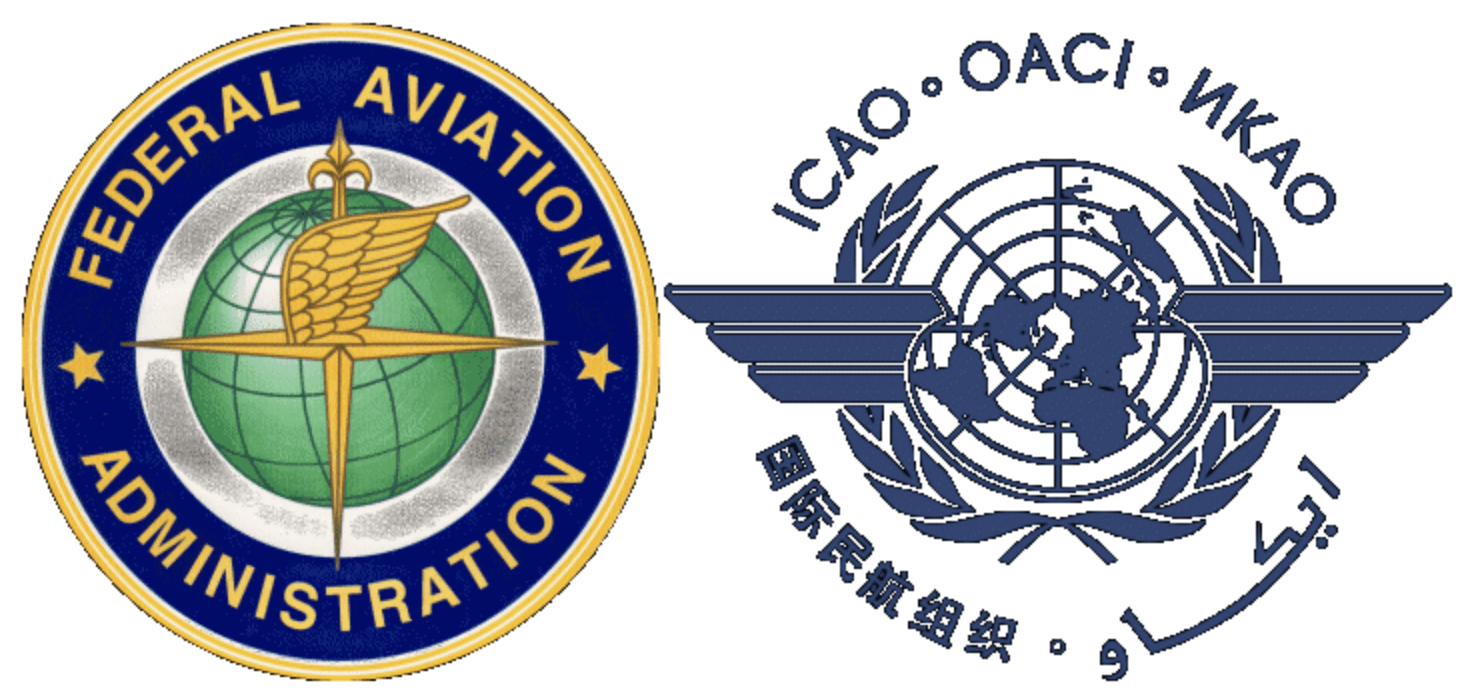
Training Plan Considerations
What are the requirements to take flight lessons?
- You can take an introductory flight with a Certified Flight Instructor (CFI) anytime. However, to enroll in flight lessons, the Transportation Security Administration (TSA) mandates proof of U.S. citizenship or compliance with specific requirements for non-U.S. citizens.
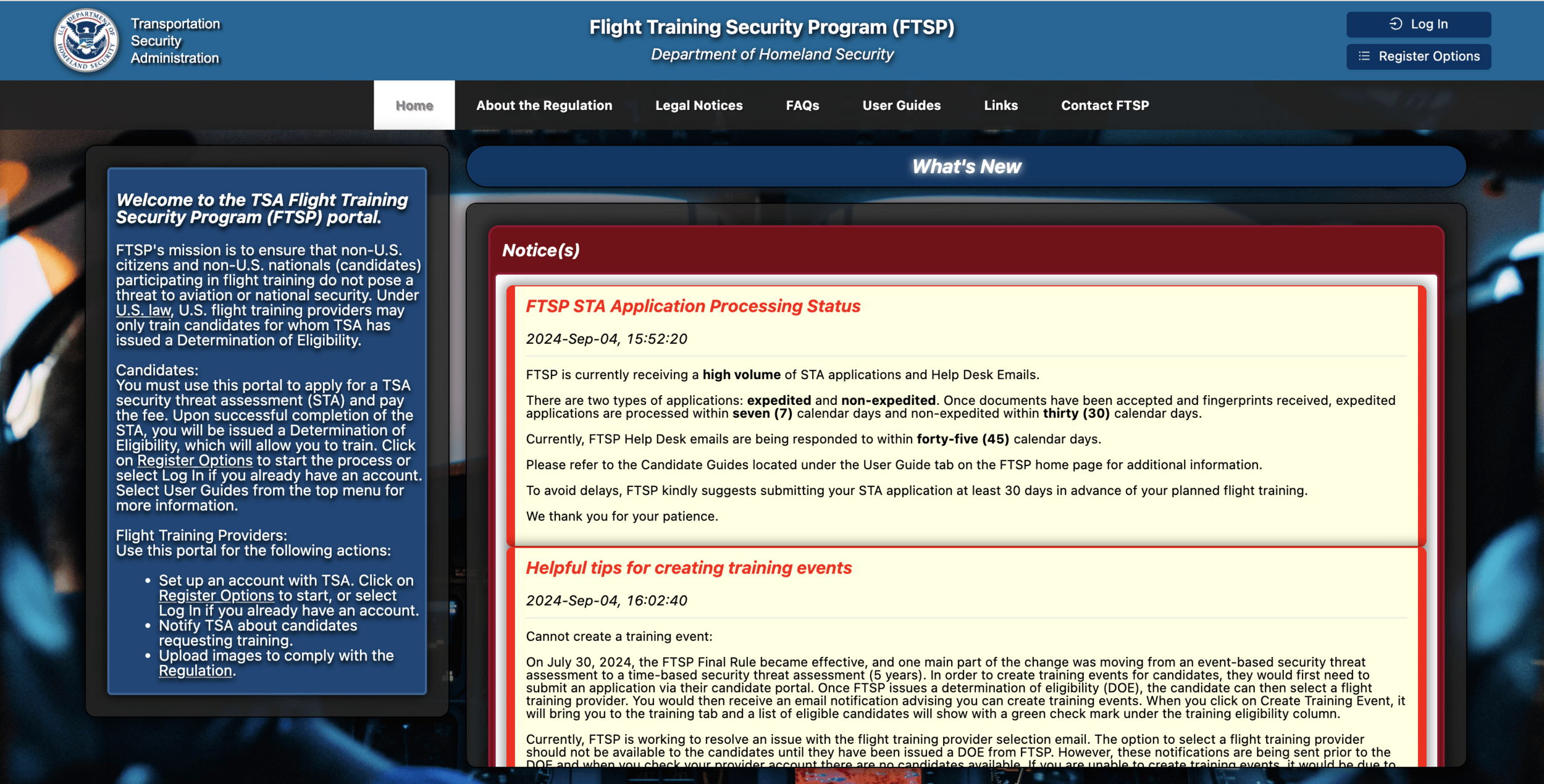
Here is the link to complete a TSA application for non-U.S. citizens: TSA Application
What are the requirements to fly solo? §61.87
- Must hold a student pilot certificate
- Must hold a medical certificate
-
Must have received the necessary endorsements in your logbook from an authorized flight instructor who confirms you have the knowledge and training to pilot an airplane safely on your own
Eligibility Requirements for Student Pilot §61.83
- Be at least 16 years old.
- Be able to speak, read, write, and understand english.
- Be at least 17 years old.
- Be able to speak, read, write, and understand English.
- Receive flight training and a logbook endorsement from an authorized instructor.
- Obtain at least a third-class FAA medical certificate.
- Pass the required knowledge test.
- Meet the aeronautical experience requirements.
- Pass a practical test on the areas of operation listed in §61.107(b).
- Hold a U.S student pilot certificate.
How to get a Medical certificate?
You must pass a physical exam administered by an FAA-authorized Aviation Medical Certificate Examiner (AME).
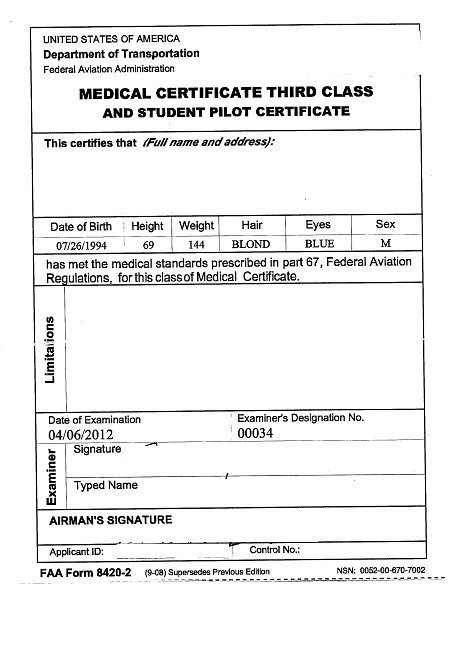
Duration of a Medical Certificate
Text
Remember, the duration depends upon the privileges that the pilot is exercising.
Text
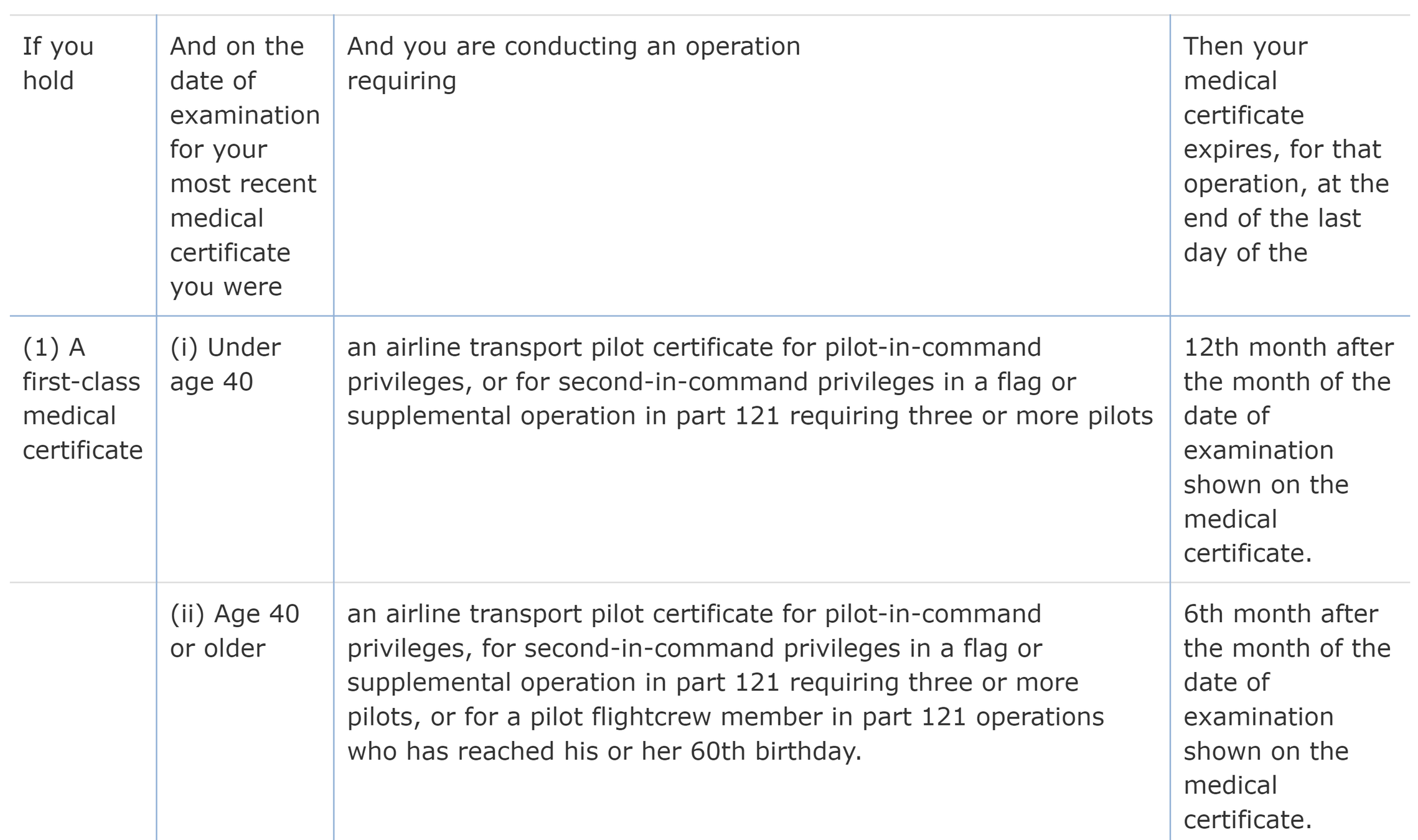
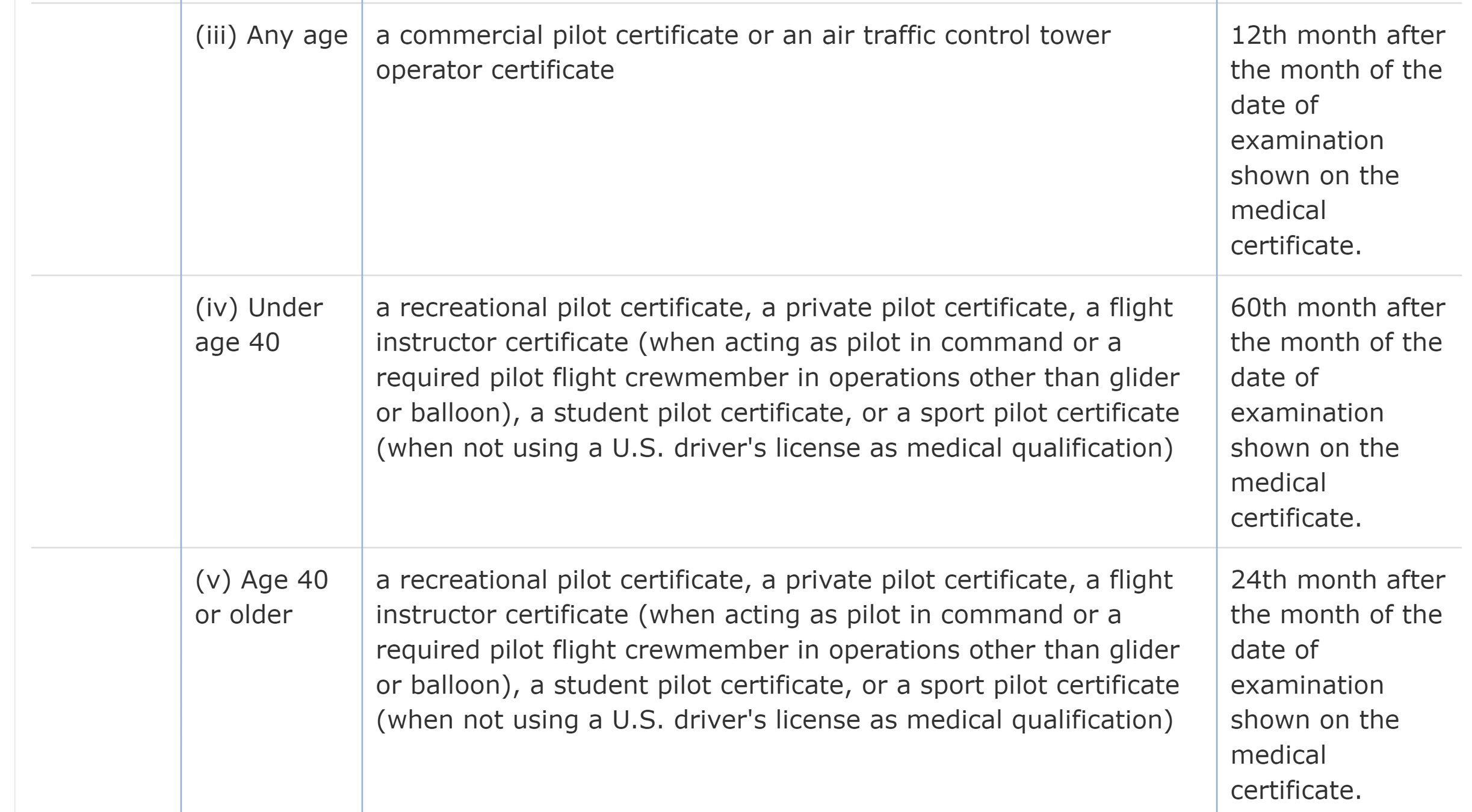
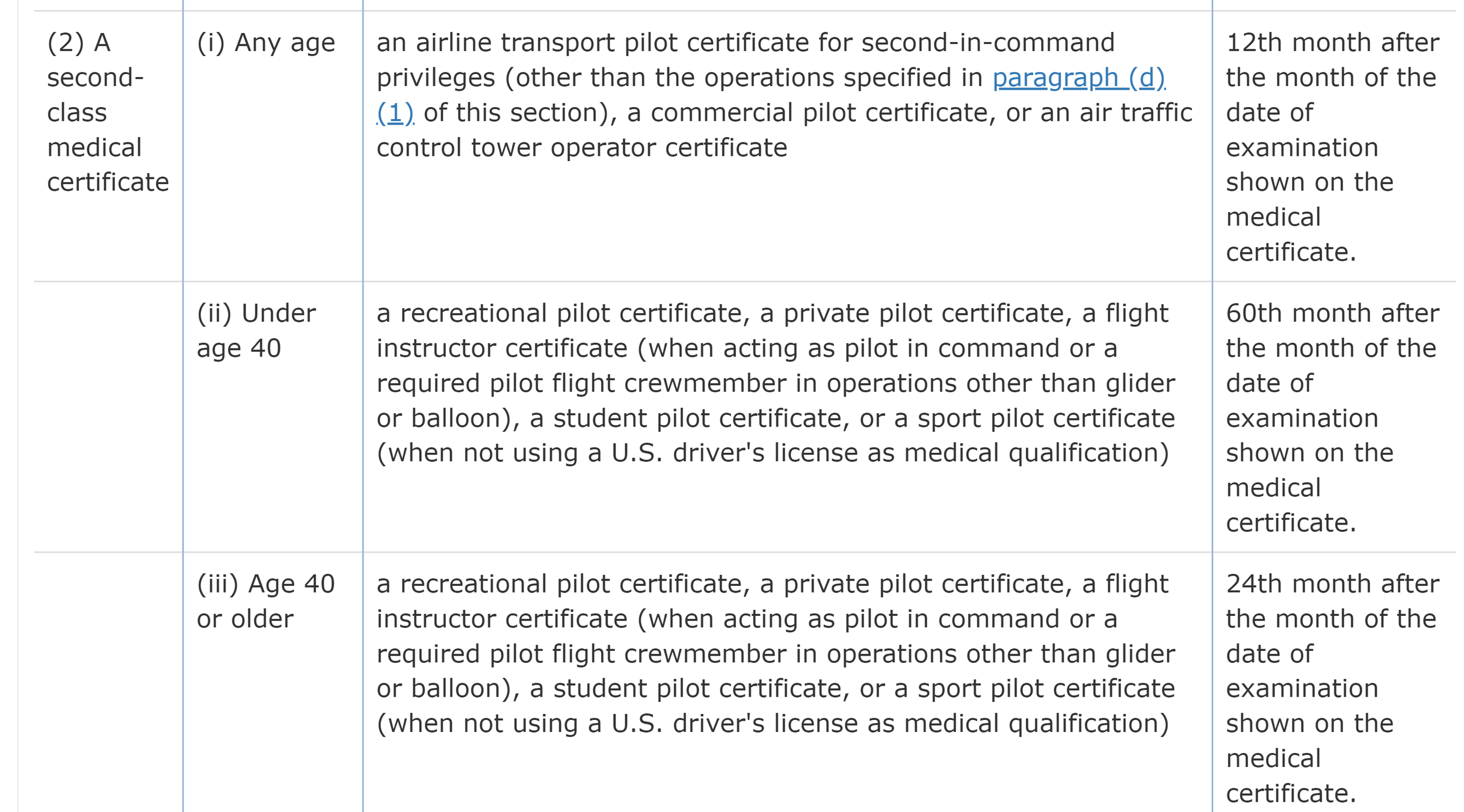
Text
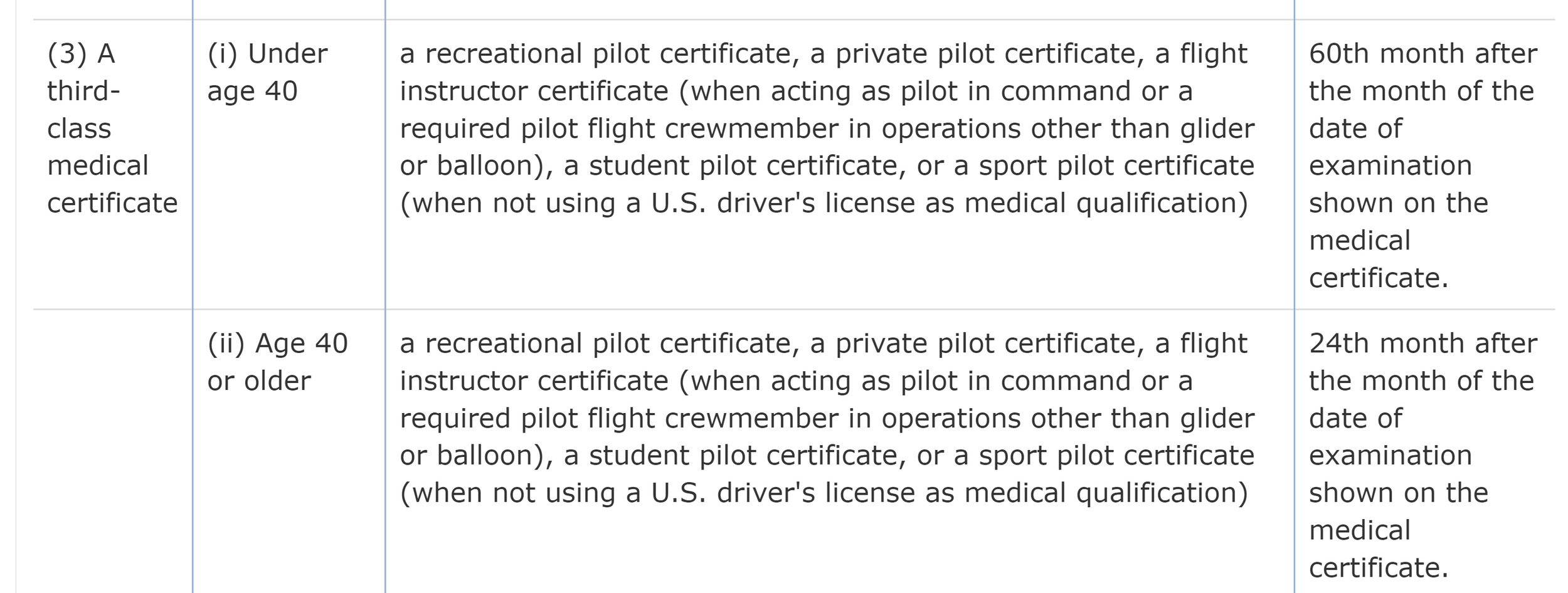
Basic Med
Basic Med relieves pilots from holding a medical certificate.
What are the requirements to fly under BasicMed?
1. Comply with the general BasicMed requirements (possess a U.S. driver's license and have held a medical after July 14, 2006).
2. Get a physical exam with a state-licensed physician, using the Comprehensive Medical Examination Checklist
3. Complete a BasicMed medical education course - Available online on AOPA - within the previous 24 months
4. Additional requirements:
Aircraft Requirements
- Any aircraft authorized under federal law to carry not more than 7 occupants.
- Has a maximum certificated takeoff weight of not more than 12,500 pounds.
Operator Requirements
- Carries not more than six passengers.
- Operates under VFR or IFR, within the United States, at less than 18,000 feet MSL, not exceeding 250 knots.
- Flight not operated for compensation or hire.
Training Program
- Private Pilot Training Phases
- Syllabus in Pilot Training
Private 141 Training Phases

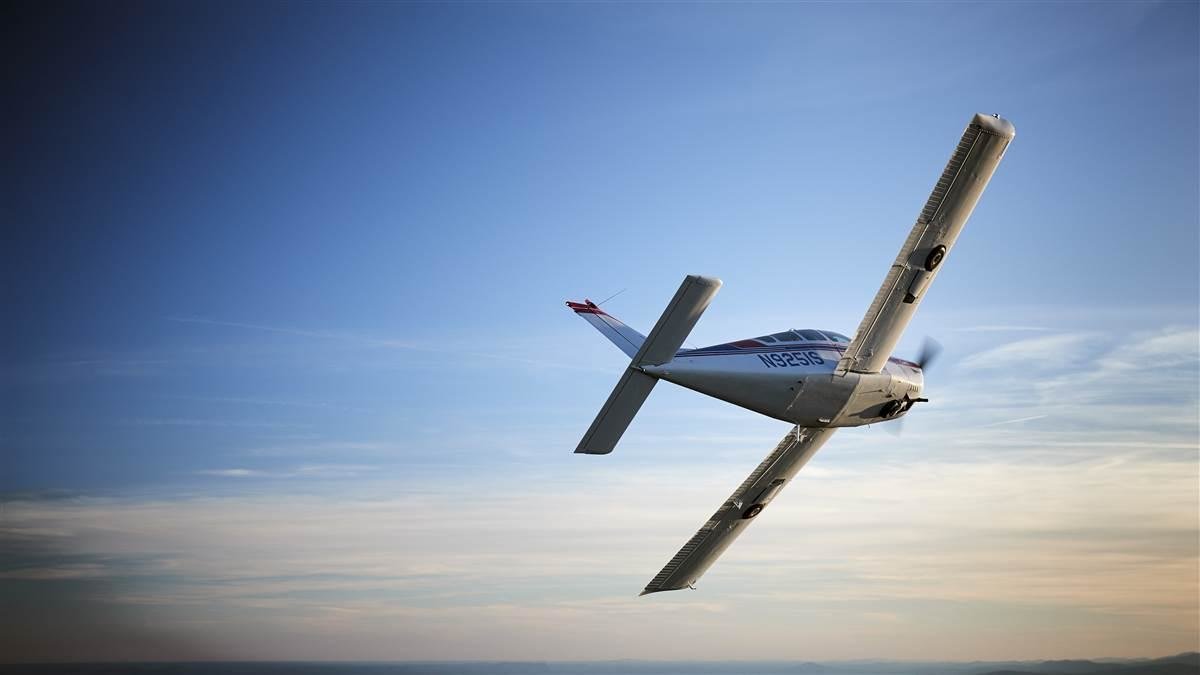
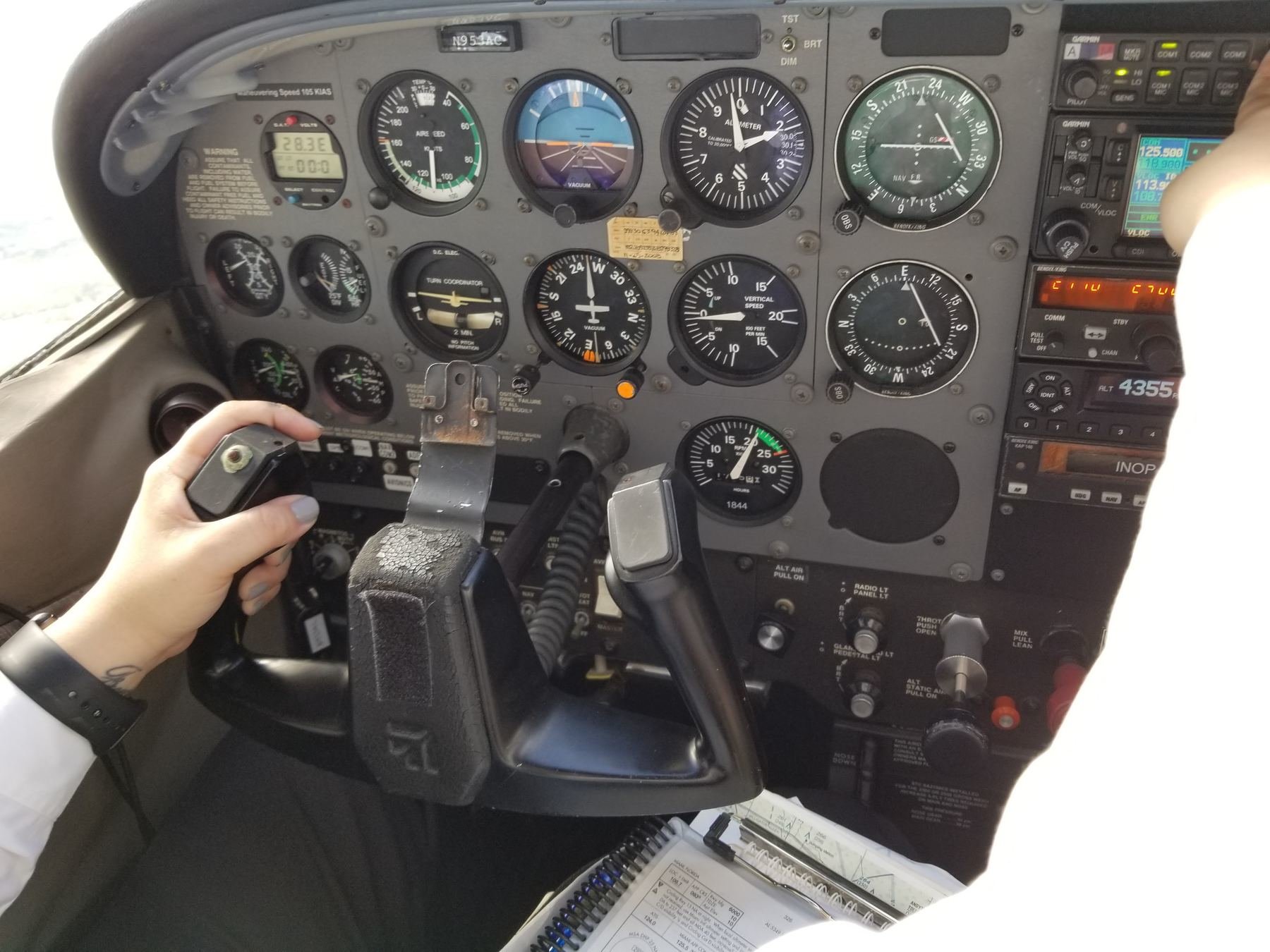
Stage 1
Stage 2
Stage 3
-
Preparation for Your First Solo Flight
-
Receive ground and flight training on topics such as airplane systems, airspace, emergencies, and takeoffs and landings.
-
Pass a pre-solo knowledge test.
-
Obtain logbook endorsements.
-
-
Preparation for Your First Solo Cross-Country and Night Flying
-
Receive ground and flight training in cross-country and night operations.
- Complete at least one dual cross-country flight.
- Complete dual local and cross-country night flights.
- Obtain logbook endorsements.
-
-
Preparation for Checkride
- Review all maneuvers, procedures, and ground knowledge based on the ACS.
- Obtain logbook endorsements.
- Submit an IACRA application for your private pilot certificate.
Syllabus in Pilot Training

A syllabus is an outline or summary of topics to be covered in an educational or training course. It typically includes the objectives, learning outcomes, reading materials, assignments, and a schedule of lessons or exams. A syllabus provides students with a roadmap for what they will learn, how they will be assessed, and any important expectations or guidelines for the course. It helps both instructors and students stay organized and aligned with the course structure.
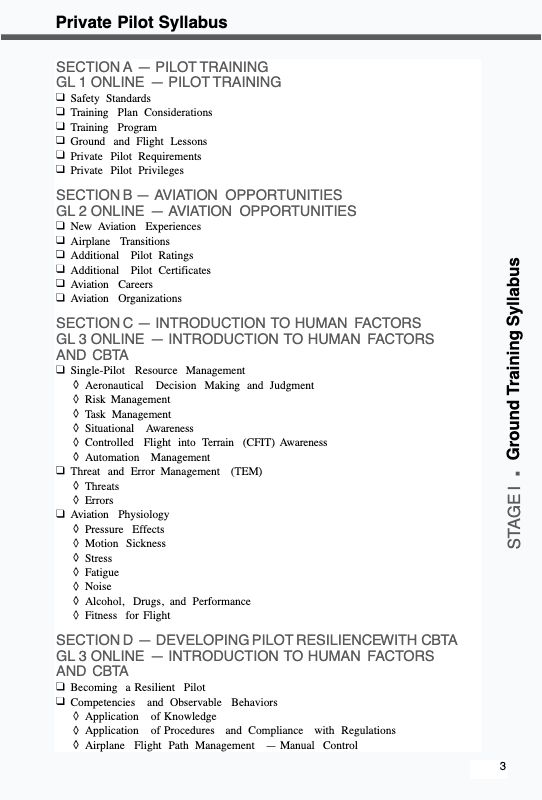
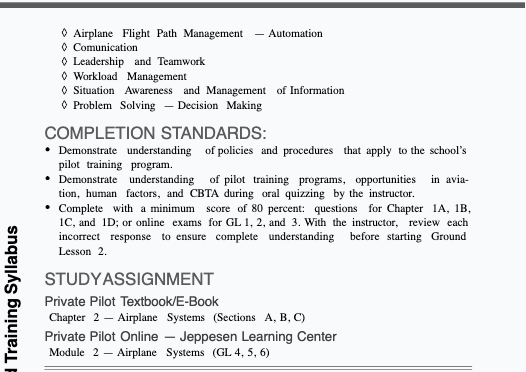
Ground and Flight Lessons
As you advance in your pilot training, your instructor assists you in connecting aeronautical knowledge with practical flight skills and risk management. This hands-on approach to both ground and flight lessons allows you to apply theoretical concepts to real-world situations while on the ground, enabling you to concentrate on flying during the actual flight lesson.
Private Pilot Requirements
| Requirements | 61 | 141 |
|---|---|---|
| Ground Training | No | 35 |
| Total Hours | 40 | 35 |
| Flight Training | 20 | 20 |
| Solo Flight | 10 | 5 |
| 1) A Cross-country (150NM total distance with stop at 3 different airports and a straight line more than 50NM) 2) A night cross-country flight of more than 100-nautical-miles total distances |
Yes | Yes |
Refer to FARs Part 141 Appendix B and Part 61.109 for more details.
Private Pilot Privileges
- A private pilot cannot be paid to act as the pilot in command of an aircraft carrying passengers or property for hire.
- A private pilot may, for compensation or hire, for business or employment if the flight is incidental to the job, and no passengers or property are being carried for hire.
- A private pilot may not pay less than the pro rata share of flight operating expenses when flying with passengers. These expenses can only include fuel, oil, airport fees, or rental costs.
- A private pilot can act as pilot in command for charitable, nonprofit, or community events.
- A private pilot can be reimbursed for operating expenses related to search and rescue missions, as long as the costs are limited to fuel, oil, airport fees, or rental costs, and the operation is directed by a recognized agency or organization.
- A private pilot with at least 200 logged flight hours, who is also an aircraft salesman, can demonstrate an aircraft in flight to potential buyers.
- A private pilot who meets specific requirements §61.69 may act as pilot in command for towing gliders or unpowered ultralight vehicles.
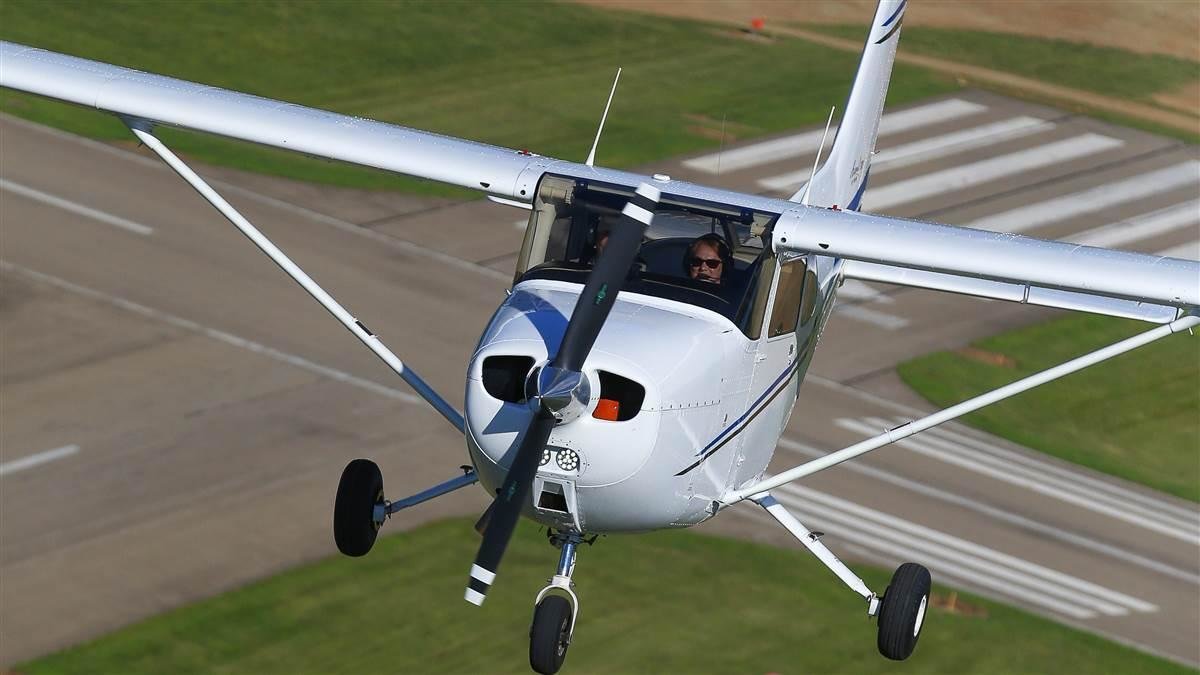
Does my private pilot certificate expire?
-
§61.56 Flight Review
-
§61.57 Recent Flight Experience
No, but you need to comply with:
-
Every 24 calendar months:
- At least 1 hour of ground.
-
At least 1 hour of flight.
-
The review must include:
- Review part 91 rules.
- A review of those maneuvers and procedures that are necessary for the pilot to demonstrate the safe exercise of the privileges of the pilot certificate.
§61.56 Flight Review
§61.57 Recent flight experience
- No person might act as a pilot in command of an aircraft carrying persons unless at least three takeoffs and three landings within the preceding 90 days were performed. The required takeoffs and landings need to be in an airplane of the same category, class, and type (If type rating is required).
- If the aircraft to be flown is an aircraft with a tailwheel or during nighttime, the three takeoffs and three landings must be a full stop.
Aircraft Category and Class Ratings
Category
-
As used with respect to the certification of aircraft, means a grouping of aircraft based upon intended use or operating limitations:
- Transport
- Normal
- Utility
- Acrobatic
- Limited
- Restricted
- Provisional
Classes
- As used with respect to the certification of aircraft, means a broad grouping of aircraft having similar characteristics of propulsion, flight, or landing
-
Examples include:
- airplane, rotorcraft, glider, balloon, landplane, and seaplane
Aviation Opportunities
New Aviation Experiences
As you gain more flying experience and confidence, you might want to take on new challenges. Pursuing additional training is a great way to improve your skills, take on new responsibilities, and keep your passion for flying alive. It can also allow you to carry passengers, and explore new airports on cross-country flights.
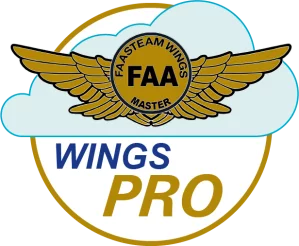


FAA WINGS
Mountain Flying
Aerobatic
-
The WINGS Program aims to reduce common causes of accidents in general aviation.
-
It focuses on improving pilot skills and knowledge to prevent recurring accidents.
-
It is not just an award program but a true proficiency training initiative.
-
The program promotes regular practice of flight basics to ensure safer and less stressful flying.
-
Mountain flying presents unique challenges for student pilots, requiring extra preparation and skill. Here are key points to keep in mind:
- High altitudes reduce aircraft performance, so expect slower climbs and less power.
- Mountain weather changes quickly and can bring strong winds and turbulence.
- Flying around mountains requires careful navigation to avoid terrain and obstacles.
- Be prepared for emergencies, as landing options are limited in mountainous areas.
- Aerobatic flying involves performing loops, rolls, and other advanced maneuvers.
- It requires precise control of the aircraft and a strong understanding of aerodynamics.
- G-forces can be intense, so pilots need to be physically prepared and manage their limits.
- Safety is key, with a focus on proper training and recovery techniques for each maneuver.
Airplane Transitions
There are many different types of airplanes to try, and switching to a new model can be one of the most exciting parts of flying. To fly a new or unfamiliar airplane safely, you need transition training, also called an aircraft checkout.
For faster speeds and better performance, train in a high-performance or complex airplane. High-performance planes have over 200 horsepower, while complex ones include features like retractable landing gear, flaps, and advanced engine control systems like FADEC. To act as PIC of a high performance or complex plane, you must have received instruction and a logbook endorsement.

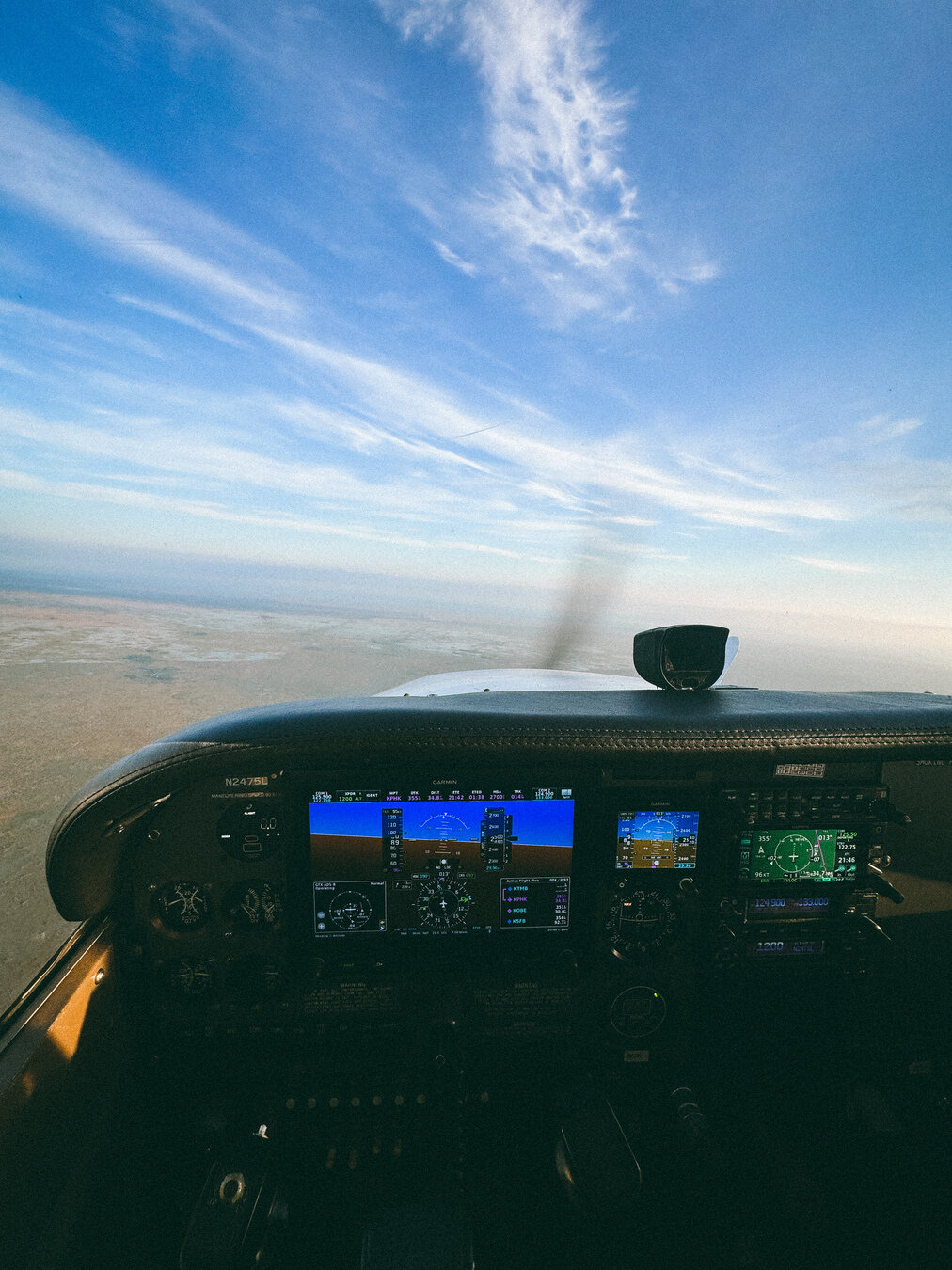
Tailwheel airplanes, or taildraggers, have their main wheels positioned forward of the center of gravity, with a small wheel at the rear. This design can make takeoff and landing more challenging, as they tend to weather vane into the wind. Pilots appreciate their unique flight characteristics and active flying style, though transitioning to a tailwheel aircraft requires specialized training.

Technically Advanced Airplanes (TAA) are aircraft equipped with modern technology like digital displays (glass cockpits), GPS navigation, and advanced autopilot systems, offering improved safety and easier flight management. The FAA does not require an endorsement to fly TAA.
High-performance or Complex Airplane.
Technically Advanced Airplanes
Tailwheel Airplanes
Additional Pilot Ratings
The FARs outline different ratings you can add to your private pilot certificate. An instrument rating teaches you new flight procedures, and class ratings let you fly more types of airplanes. Type ratings are required for flying turbojets, aircraft over 12,500 pounds, certain helicopters, and other specific aircraft set by the FAA.
Additional Pilot Ratings
Instrument Rating
- Allows you to fly in a wider range of weather conditions and increases your skill.
Multi-Engine Rating
- Allow you to fly an airplane with 2 engines or more and is required for most flying jobs.
Seaplane Rating
- Allow you to fly an airplane with main floats or wing floats.
After your first experience of flying, you may want to spread your wings and explore a new category and class of aircraft.
- Category : Classification of aircraft : airplane, rotorcraft, glider, etc.
- Class: A classification of aircraft within a category having similar operating characteristics. Single engine land, multi-engine land, etc.
- Type: A specific model make and basic model of aircraft including specifications that do not change its handling or flight characteristics: DC-9, A320.
Category and Class Rating
Aircraft Category
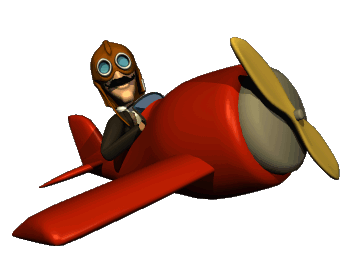
Airplane
Glider
Rotorcraft

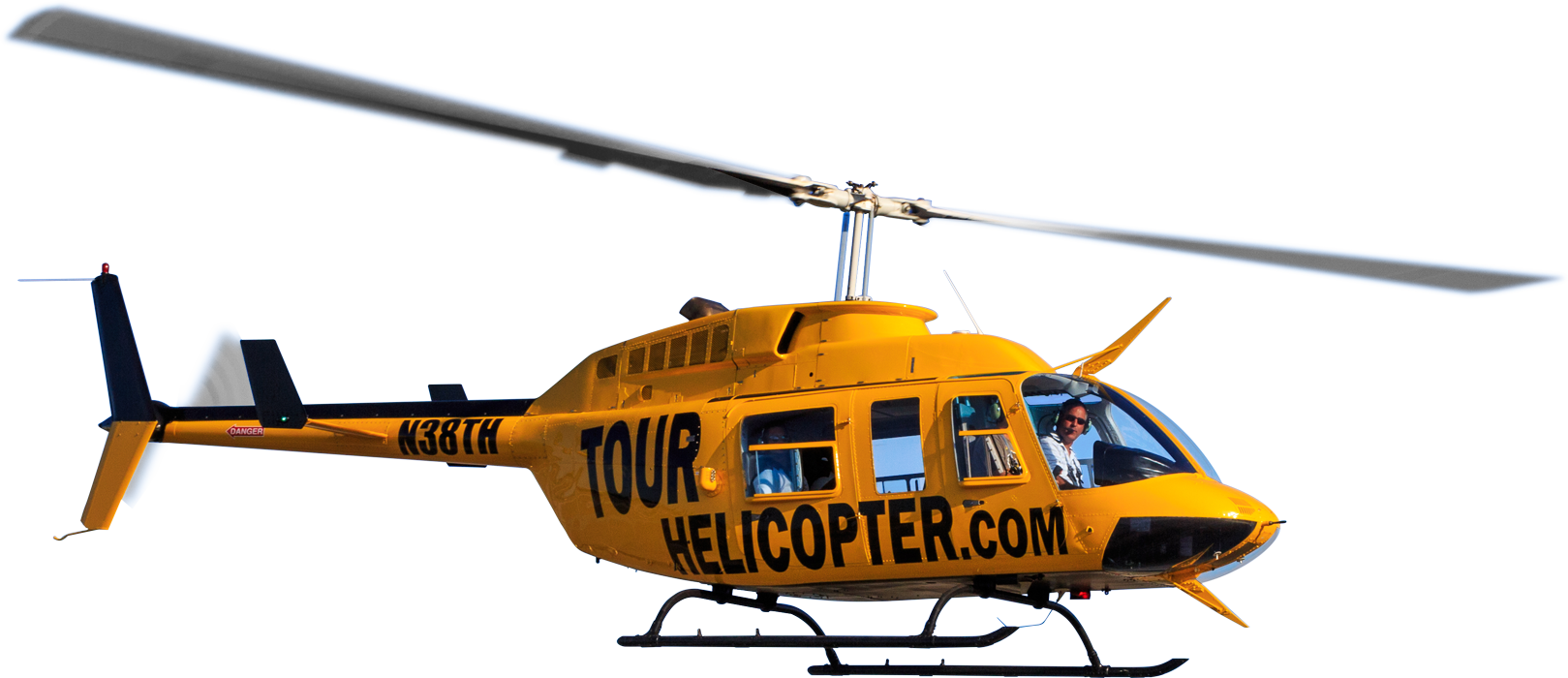
Single-Engine

Multi-Engine
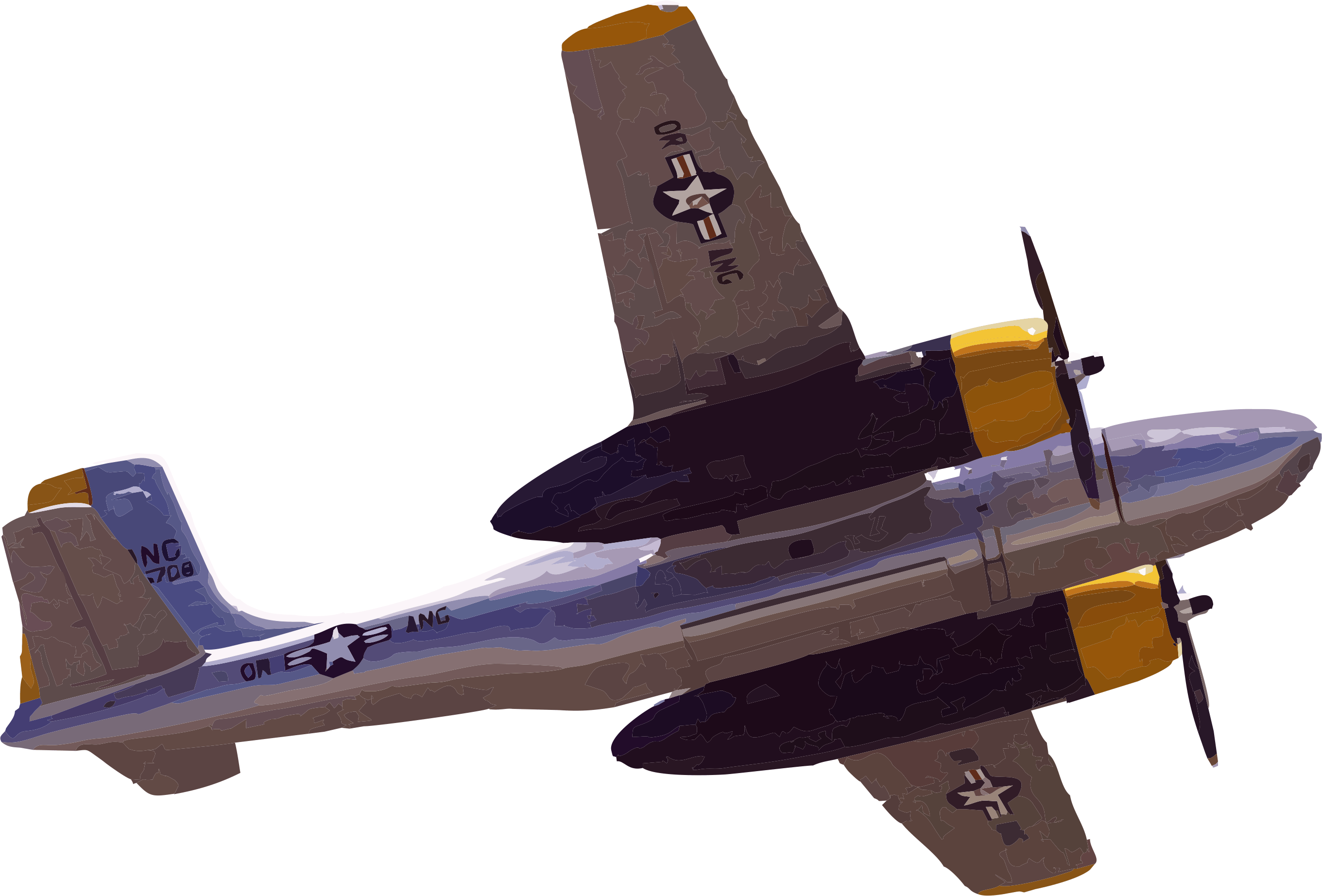
Land
Sea
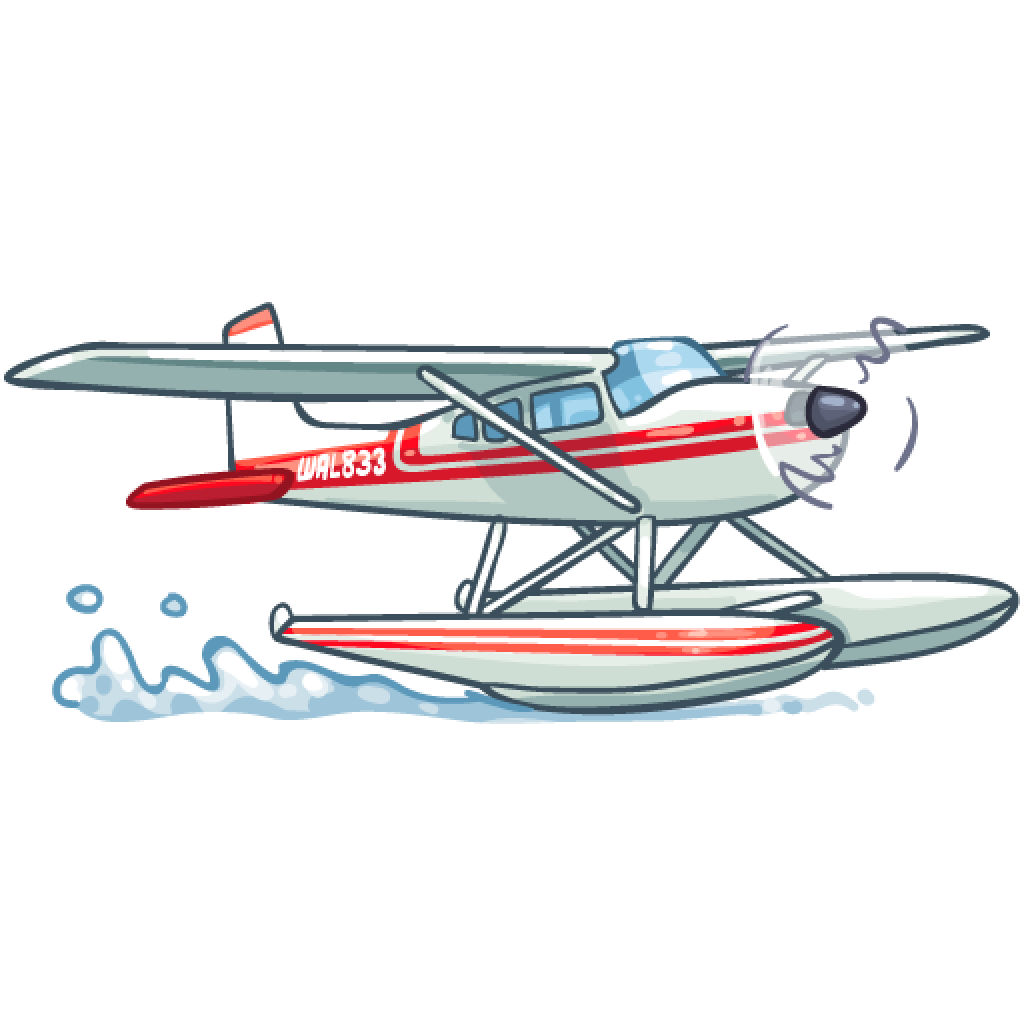

Aircraft Class
Additional Pilot Certificates
- As a pilot, you can always continue expanding your aviation career and experiences.
-
Additional Certificates are:
- Commercial Pilot
- Certified Flight Instructor
- Airline Transport Pilot
Aviation Careers
- Air taxi
- Aircraft salesman
- Air ambulance
- Test pilot
- Airline transport pilot
- Search and rescue mission
- Certified flight instructor
- Towing banners
- Crop dusting
Aviation Organizations
- There are aviation organizations where pilots can gather information, scholarships, and that promote safety.
- Organizations whose missions are education, cadet programs and emergency services.
AOPA
- Nonprofit organization dedicated to general aviation
- Help to make flying fun, safe, and affordable
(Aircraft Owners and Pilot Association)
Ninty Nines
- International organization of female pilots
- Promotes advancement of aviation through education and scholarships
Introduction to Human Factors
Human factors training aims to enhance aviation safety by improving pilot performance and minimizing human error. This section emphasizes two main areas: single-pilot resource management and aviation physiology
Single-Pilot Resource Management
Single-Pilot Resource Management (SRM) is defined as the art and science of managing all resources—both onboard the aircraft and from external sources—available to a single pilot to make effective decisions about the current and future status of the flight.

SRM encompasses these key concepts:
- Aeronautical decision making
- Risk management
- Task management
- Situational awareness
- Controlled flight into terrain awareness
- Automation management
Aeronautical Decision Making
ADM is a systematic approach to the mental process used by pilots to consistently determine the best course of action in response to a given set of circumstances.
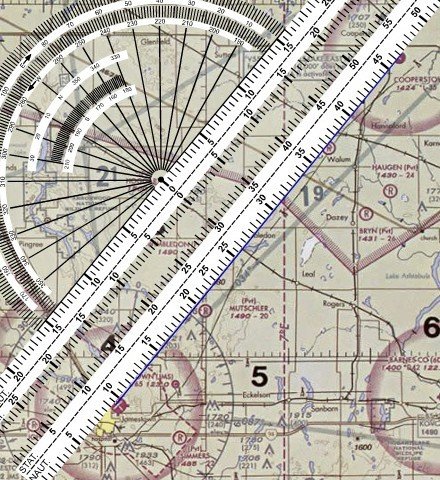
- Define the problem
- Choose a course of action
- Implement the decision
- Evaluate the outcome
Steps in the decision making process
The Model Most Commonly Used

3P Model
- Perceive: Think about the circumstances related to the Pilot, Aircraft, enVironment, and External pressures. (PAVE)
- Process: Evaluating their impact on flight safety. Think about the Consequences, Alternatives, Reality of the situation and External factors. (CARE)
- Perform: Determine the best course of action.
Self Assessment

Your attitude affects the quality of your decisions.
The 5 Hazardous Attitudes are:
- Anti-authority
- Impulsivity
- Invulnerability
- Macho
- Resignation
Hazardous Attitudes
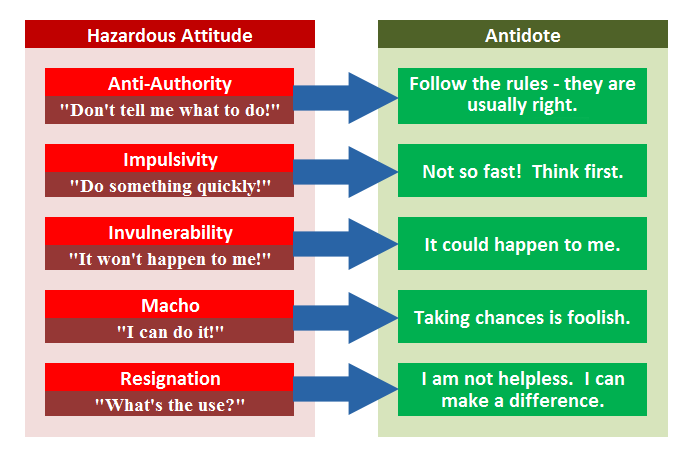
How to identify and cure them?
§91.3 Pilot-in-command Responsibilities
As PIC, you are the final authority of the aircraft.
1. You are directly responsible for the safety of flight.
2. Understand your own limitations, your health, level of stress or fatigue, attitude , knowledge, and skill level.
Crew Resource Management Training
CRM is the effective use of all available resources; human, hardware, and information.
Risk Management
Risk management is the ability to identify hazards and associated risks that could cause accidents.

1) Flying is not possible without risk, but unnecessary risk comes without a corresponding return.
3) Make risk decisions at the appropriate level.
2) Accept risk when benefits outweigh dangers (costs).
Laws of Risk Management
Risk Management/ADM are divided into:

Hazards
Hazards that will become a Risk
Mitigate the Risk
Perceive
Verify if aircraft is in airworthy condition for flight, (AVIATES). Documents and pre-flight inspection.
Check yourself. Are you in the capacity to perform as a PIC, IMSAFE checklist, & proficiency?
Pilot
Aircraft
enViroment
External pressures
Be familiar with the terrain, airports , airspace, and check the weather.
Someone waiting at the airport, passenger disappointed, desire to impress someone, etc.

Process
C
A
R
E
Consequences
Alternates
Reality
External Factors
You CARE about the Hazards that will become a Risk
What is going to happen if...?
What are your options? Delay the flight?
Dangers of fatigue could lead to an accident
Wedding or business meeting might be influencing this decision?
Perform
T
E
A
M
Transfer
Eliminate
Accept
Mitigate
Mitigate the Risks by performing TEAM WORK
Chief Pilot, CFI, More experienced Airman
Is there a way to eliminate the Risk?
Do the benefits of accepting risk outweigh the costs?
Is there a way to eliminate the Risk?
Task Management
- The process by which pilots manage many tasks that must be performed to ensure the safety and efficiency of flying a modern aircraft.
Workload Management
- Effective workload management ensures essential operations are accomplished by planning, prioritizing, and sequencing tasks to avoid work overload. The use of all resources available is the key for effective workload management.
Checklist
Checklists are essential tools for managing distractions during procedures. There are two main ways to use them:
- Do-List: Read each checklist item and perform the action immediately. This method is useful when you have time, and following the exact order is important.
- Flow Pattern: Move through the flight deck in a logical sequence without the checklist, then check the list afterward to confirm each item is complete.
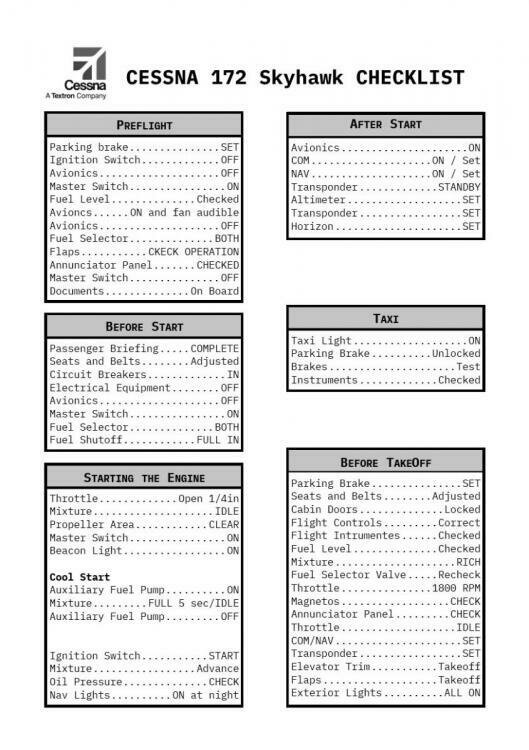

Internal Resources
External Resources
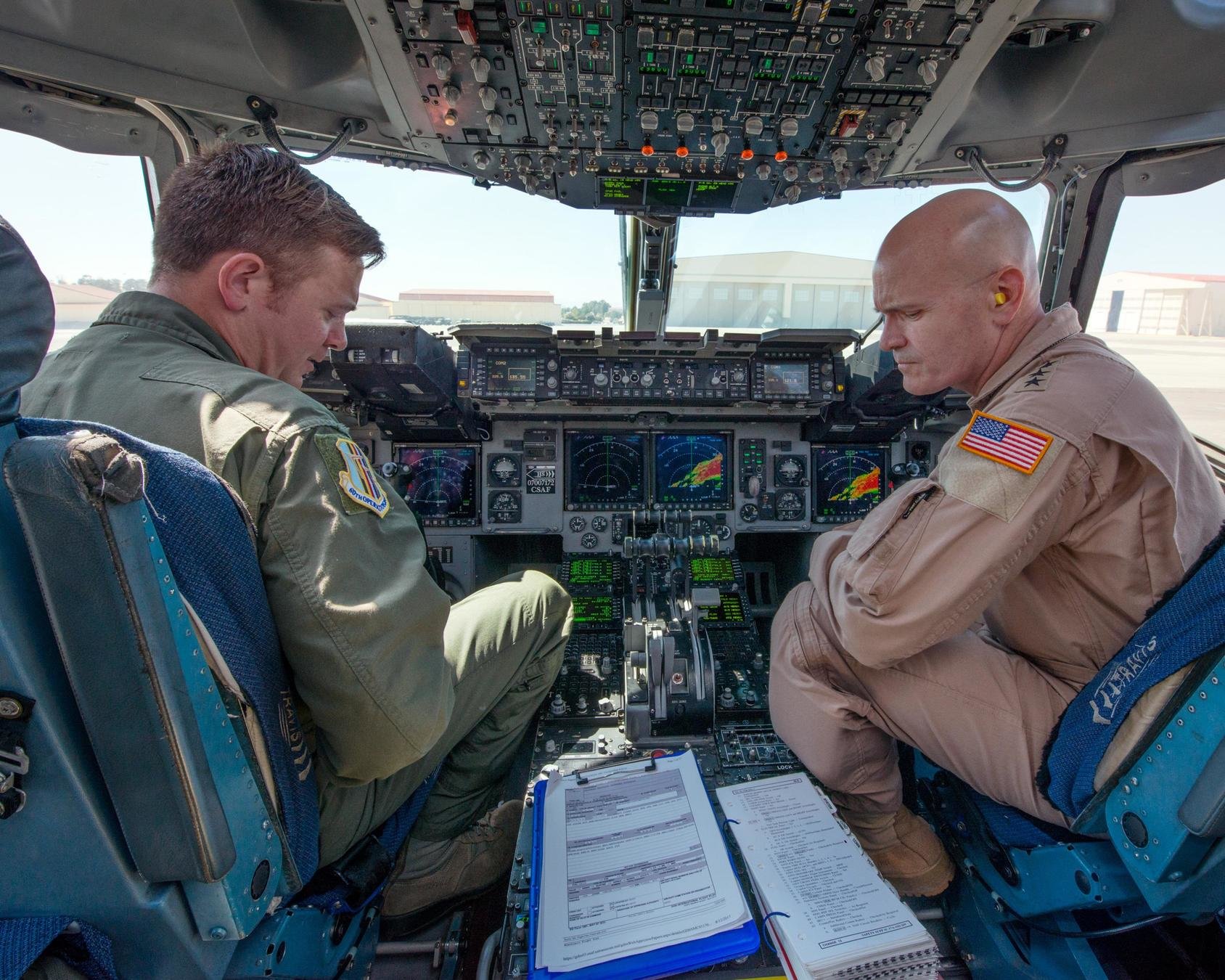
- Pilot
- Aeronautical Charts
- Passenger
- Checklist
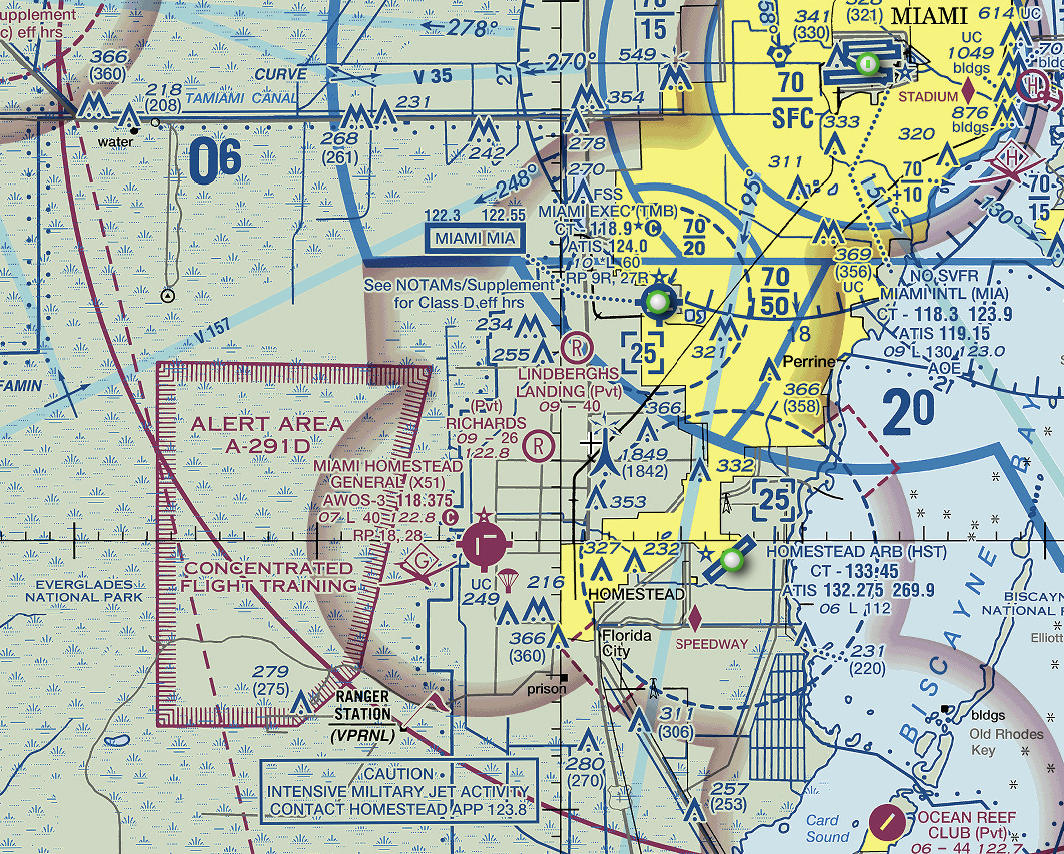
- ATC
- Radar Vectors
- FSS

Situational Awareness


Situational awareness is the accurate perception and understanding of all the factors and conditions within the five fundamental risk elements (flight, pilot, aircraft, environment, and type of operation that comprise any given aviation situation) that affect safety.
Examples: Proximate terrain, obstructions, airspaces and weather systems.
Controlled Flight Into Terrain (CFIT) Awareness
Is an accident in which an airworthy aircraft, under pilot control, is unintentionally flown into the ground, a mountain, a body of water or an obstacle.
Caused By: Lack of situational awareness.
CFIT can be avoided with proper training procedures, crew resource management (CRM) and radar surveillance by air traffic services.
Automation Management
- The automation is the use of autopilot, or any automation, to improve situational awareness during the different phases of the flight. The autopilot posses the capability of controlling the aircraft attitude.
- The Pilot must know how to manage the autopilot and navigation sources.
Threat and Error Management (TEM)

Threat and Error Management (TEM) is a safety approach that helps pilots handle potential risks and errors during flights.
It focuses on three main areas:
-
Threats: External factors like weather or traffic that could affect safety. Pilots aim to spot and manage these early.
-
Errors: Mistakes by crew members, like missing checklist steps. TEM promotes quick detection and correction of errors.
-
Undesired Aircraft States (UAS): When the aircraft ends up in an unintended or unsafe condition. TEM helps pilots avoid these situations or handle them safely if they happen.
TEM gives pilots a practical way to manage complex situations and enhance flight safety.
Aviation Physiology
Pressure Effects
-
In aviation, the demands upon the compensatory mechanisms of the body are numerous and of considerable magnitude.
- The environmental changes of greatest physiological significance involved in flight are marked changes in barometric pressure, considerable variation in temperature, and movement at high speed in three dimensions.
Motion Sickness
- Erroneous messages sent to the brain will eventually lead to a headache, drowsiness, fatigue, vomiting.
- Focusing far away to the horizon, opening air vents, and drinking water might help with symptoms.
Stress
In aviation, stress refers to the physical and mental pressure that pilots and crew may experience due to factors like workload, environmental conditions, time constraints, and unexpected situations. High levels of stress can impair decision-making, reduce reaction times, and impact overall performance, increasing the risk of errors. Managing stress effectively is essential in aviation, as it helps maintain focus, enhances safety, and supports optimal performance in demanding or high-pressure situations.
Fatigue
- Fatigue is associated with degradation of attention and concentration, impaired coordination, and decreased ability to communicate.
Two broad categories:
- Acute (short term)
- Chronic (long term)
-
The elements that cause an individual to experience fatigue are:
- Physical fatigue
- Mental fatigue
Fatigue
Acute Fatigue
- Acute fatigue is short term and is a normal occurrence in everyday living.
- It's the kind of tiredness people feel after a period of strenuous effort.
- Acute fatigue can be prevented by getting adequate rest and maintaining a proper diet.
Chronic Fatigue
- Chronic fatigue, extending over a long period of time, usually has psychological roots, although an underlying disease is sometimes responsible.
- Continuous high-stress levels produce chronic fatigue.
- Usually requires treatment by a physician.
Noise
- Noise exposure has harmful effects that are cumulative.
- Adverse impacts on the listener increase as sound intensity and duration are increased.
- Use ear protection when flying for long periods.
Alcohol, Drugs and Performance
- Alcohol and drugs impair the efficiency of the human body.
- As little as one ounce of alcohol can decrease the speed and strength of muscular reflexes, lessen the efficiency of eye movements while reading, and increase the frequency at which errors are committed.
- Considerable amounts of alcohol can remain in the body for over 16 hours, so pilots should be cautious about flying too soon after drinking.
- 14 CFR part 91 requires that blood alcohol level be less than .04 percent and that 8 hours pass between drinking alcohol and piloting an aircraft.
Alcohol and Drugs are NOT allowed in Aviation
Fitness For Flight

Before flying, assess your physical and mental readiness by asking key questions: Do I have an illness that could impact safety? Could any medication I'm taking wear off mid-flight or cause side effects that affect my performance? Am I fatigued or stressed? If the answer to any of these is “Yes” or “I don’t know,” you may not be fit to fly.
Becoming a Resilient Pilot
Becoming a resilient pilot means developing the ability to adapt and perform effectively under stress or unexpected challenges. A resilient pilot can stay calm, think clearly, and make sound decisions even in high-pressure situations. Resilience involves several key qualities:
- Situational Awareness: Constantly monitoring and assessing the environment to anticipate and respond to changes.
- Adaptability: Adjusting quickly to unforeseen events, such as sudden weather changes, technical issues, or unexpected air traffic conditions.
- Stress Management: Recognizing and managing personal stress to maintain focus and prevent errors during demanding situations.
- Continuous Learning: Actively learning from both training and past experiences to strengthen skills and decision-making.
- Confidence and Self-Control: Trusting in one’s abilities and training while staying composed to avoid rash actions.
A resilient pilot combines these qualities to enhance safety and efficiency, which is essential for managing the complex, dynamic nature of aviation.
Competencies and Observable Behavior
Throughout your training, you should demonstrate specific observable behaviors (OBs) that show you've mastered each competency. Nearly all competencies and most observable behaviors apply to you as a student pilot from your very first flight.
Application of Knowledge
Knowledge is the foundation for all the skills you’ll need as a pilot. You build this knowledge through self-study, lessons with your instructor, and classroom training; and you apply it to make safe decisions on the ground and in the air. From the start of your training, it’s important to learn and retain information well, so you can recall it quickly during normal operations. When you face challenging situations, being able to access this knowledge helps you manage tasks effectively, stay calm under pressure, and handle stress.
Application of Procedures and Compliance with Regulations
The PRO competency promotes safety by guiding you to operate the aircraft according to FAA regulations, manufacturer guidelines, and flight school procedures. The aviation industry emphasizes Standard Operating Procedures (SOPs)— clear, uniform standards for performing routine operations safely, efficiently, and accurately. Understanding and following these SOPs and regulations is essential during both ground and flight operations.
Airplane Flight Path Management - Manual Control
You develop mastery of the technical skill of airplane flight path management—manual control (FPM) in each lesson by practicing various maneuvers, from steep turns to landings. One of the aviation industry’s biggest concerns is the decline of manual flying skills due to overreliance on automation. It’s essential that you can disengage automation and maintain full control of the aircraft in any flight situation.
Airplane Flight Path Management - Automation
After mastering manual flight control, you'll learn to manage flight path using autopilot systems. This involves understanding how the autopilot integrates with other systems, engaging it correctly for each phase of flight, and actively monitoring the flight path to respond to any deviations.
Communication
To interact effectively in aviation, demonstrate communication competency by clearly communicating with various individuals, mastering radio phraseology, delivering concise briefings, actively listening, and being proficient in English.
Leadership and Teamwork
The Leadership and Teamwork (LTW) competency applies beyond professional flight crews. As a student pilot, develop LTW skills by:
-
Building a strong relationship with your flight instructor
-
Mentoring fellow student pilots
-
Utilizing flight school staff for resources and expertise
This will help you succeed in engaging with others, including pilots and passengers, and become a proficient private pilot.
Workload Management
Workload management (WLM) involves planning, prioritizing, and delegating tasks to avoid overload. Complete tasks during low-workload periods to prepare for busier phases. Use internal resources like checklists and external help like ATC to manage the workload. If you feel overwhelmed, speak up to your instructor, and as a private pilot, share tasks with other pilots to reduce your workload.
Situation Awareness and Management of Information
Mastering situation awareness and management of information (SAW) means staying fully aware of your surroundings and accurately perceiving factors affecting your flight. This involves analyzing the airplane, environment, and yourself to understand the current situation and predict future events. You’ll use monitoring techniques and cross-check information from various sources to maintain awareness. Developing plans to identify and manage threats and errors is crucial to preventing a loss of situational awareness.
Problem Solving - Decision Making
Mastering competencies like workload management and situational awareness improves your ability to manage threats and errors, and enhances problem-solving skills. Using threat and error management along with the aeronautical decision-making process (ADM) helps you define problems and implement effective solutions.
